Benefits of using of AI, IoT and automation in the aluminium industry
The aluminium industry has witnessed a technological evolution in the past decade, with big players altering their production methods to include automation, the Internet of Things (IoT) and Artificial Intelligence (AI). After the Paris Environmental Pact of 2015, where the world vouched to be more careful about carbon emissions, the need to conserve energy, re-utilise used materials, and kerbside recycling has increased. Wars have the ability to encourage the implementation of transformational processes that might boost productivity and quality. During the 20th century, more precisely in 1913, Henry Ford introduced the concept of automation in his car production assembly line, and from then, the active use of automated processes in heavy industries has increased. Additionally, the Russia-Ukraine conflict for the better part of the year has taught the aluminium industry peers how unpredictable the market can be during altercations. Many large organisations have adopted automation to streamline the production process and yield the required amount of raw material in time.

Automation is important in the aluminium industry because of its propensity for vastness and intense energy intake. With the help of technology, it becomes easier to track and analogue the amount of work done or the products yielded. Moreover, working inside aluminium smelters or plants can be extremely strenuous because the amount of heat generated during production can be fatal over time. Companies are keen on curtailing the manpower required to control the operations of a plant by replacing humans with AI or IoT. Technology, unlike humans, won't ask for an appraisal but just an upgrade.
Data integration and regularly following business analytics might also help in designing a full-proof production plan for energy-intensive aluminium organisations. Some of the reasons why industry stalwarts are recommending the use of technology:
Streamlined activities and Industry 4.0: Industry 4.0 is the first step towards digitalisation, and it is a pretext that ensures the complete alignment of machinery and production lines in a closely knitted network. Data entry and bookkeeping, which might have been a key part of heavy industries, are things of the past because now everything can be made available with a click of a button.
Supply Chain Optimisation: With the use of technology, aluminium producers are now able to generate flagship elements while tracking the outcome live, which saves a lot of time and helps in giving detailed data on the raw material till it transforms into the finished product. The tracking of raw or finished products has become quite possible with automation.
Maintenance and Quality Control: With technical interfaces, it has become possible to get relevant alerts whenever there is a possibility of a breakdown, or the system needs repairing. Technology integration has turned the entire aluminium value chain into a living, breathing entity with its own derelictions and capabilities. The only good point about it is everything can be analysed and tracked through multiple control boards and monitors.
Precise Engineering: The most important outcome of automation in the aluminium industry is enhanced product quality and its ultimate application. Technology has been crucial in generating perfectly designed aluminium pieces for monocoque applications or in the making of intricate aluminium components for use in the aviation, automobile and Electric Vehicle (EV) sectors.
Data Analytics and AI: These are the two very important yet recently discovered pillars of the aluminium industry. Through the active implementation of data analytics, companies are able to track their probable outcome and form AI algorithms to predict futuristic data through calibration using the theory of probability.
The use of technology practically eliminates the room for human error and substantially amplifies the production rates of companies with a lot to offer in a plate. Hydro, Capral, Novelis, EGA and other large aluminium producers have already begun optimising their production lines with automation and IoT.
Who would have known the mere observations of the great British Mathematician Alan Turing would come in handy after sixty-nine years of his untimely demise? To put forward my argument, it can be proved how World War II had given rise to this great mind when he tried to decode the German encrypted communication machine, Enigma and laid the foundations for quantum computing. Later in 1998, Isaac Chuang from Los Alamos National Laboratory, Neil Gershenfeld from Massachusetts Institute of Technology (MIT), and Mark Kubinec from the University of California at Berkeley developed the first quantum computer (2-qubit) that had the capability to receive data and provide a solution as an output.
Some of the global aluminium firms that have been formally intrigued with the use of automation are:
EPIQ Machinery and DTA: EPIQ Machinery and DTA have teamed up to offer AGV solutions to the international aluminium market. With over 20 years of experience, EPIQ Machinery is investing in R&D to design the industry's safest and most reliable Electrical auto-guided vehicle. The partnership with DTA offers proven AGV solutions and aims to make the technology accessible to clients' specific needs while embracing Industry 4.0. Together, they share a passion for challenges and safer, smarter moves.
EGA and Microsoft: EGA is the world's largest producer of 'premium aluminium' and is already using digital tools like AI and big data to transform its operations. Emirates Global Aluminium is in the process of installing highly automated overhead cranes in Jebel Ali to eventually have fully automated cranes for reduction cell tending. Fourteen new models will replace sixteen old cranes because they feature auto-positioning and advanced sensory capabilities. Improved safety, reliability, and efficiency are expected with heightened automation systems, leading to EGA's future goal of full automation. Microsoft UAE and Emirates Global Aluminium are teaming up to improve sustainability and establish global standards for the aluminium industry. The partnership will focus on Industry 4.0 and digital transformation, leveraging Microsoft's cloud technology to increase efficiency and reduce CO2 emissions by over 80%. Energy usage of EGA's computer activities will also be reduced by up to 65%. EGA is actively encouraging the use of sensory wearables for its employees working near the furnace so that unprecedented heat-related accidents can be avoided. EGA employees now have a completely monitored work environment because the company has very efficiently clubbed technology with public safety requirements.
Vedanta: Vedanta Aluminium has implemented IoT technology to analyse and reduce water usage at its power facilities in Jharsuguda, India. The technology suggests optimal water quality parameters, increasing the reuse of cooling water and improving plant efficiency. This has resulted in better water quality, less scaling and corrosion, and improved operational factors. Vedanta Aluminium's expansion is future-ready with its ability to provide a disruptive step-change in operations. Vedanta Aluminium has also introduced Industrial Internet of Things (IIoT) in fabric filters at its 2400 MW Thermal Power Plant to keep track of carbon emissions.
BALCO: BALCO, a major Indian aluminium producer, has implemented T-Pulse HSSE Monitoring System, which uses AI to monitor workplace behaviour and prevent accidents. This comprehensive solution uses cameras, sensors, and drones to provide real-time data on activities and assess risks. It oversees all safety protocols, such as vehicle safety, personal protective equipment usage, and work at height, to offer logical inferences for advanced safety.
Recycleye: In a recent development, Recycleye, a company that uses AI-powered waste management robots, has raised $17 million in funding to improve its waste sorting process. The robots can sort materials like plastics, paper, cardboard, and aluminium without obstacles, thanks to their smart programming and advanced robotics. Recycleye's AI technology converts waste into useful raw materials and generates important data for decision-making at Material Recovery Facilities. The funding will help Recycleye improve its sorting technique and achieve greater accuracy.
It is quite inspiring to find automation at every vertical of the aluminium value chain, from primary aluminium production to ingot pouring, to downstream extrusion manufacturing, to end-use production cycles and lastly, recycling. Digitisation might not be a new concept, but its worldwide application was scarce and complicated, but with the emergence of Artificial Intelligence, it has become a child's play. We hope to see the aluminium industry turn into a more futuristic one with facts not only based on prediction but probability.
AL Circle feels elated to be a part of this change and wishes all the best to the associated companies in the aluminium world. Some may already have implemented automation, while others are on the path to receiving enough motivation. If you wish to learn more about Digitalisation in the aluminium industry and have a better purview of Industry 4.0, please have a glance at AL Circle's exclusive reports.
This news is also available on our App 'AlCircle News' Android | iOS

.jpg/0/0)













.png/0/0)







